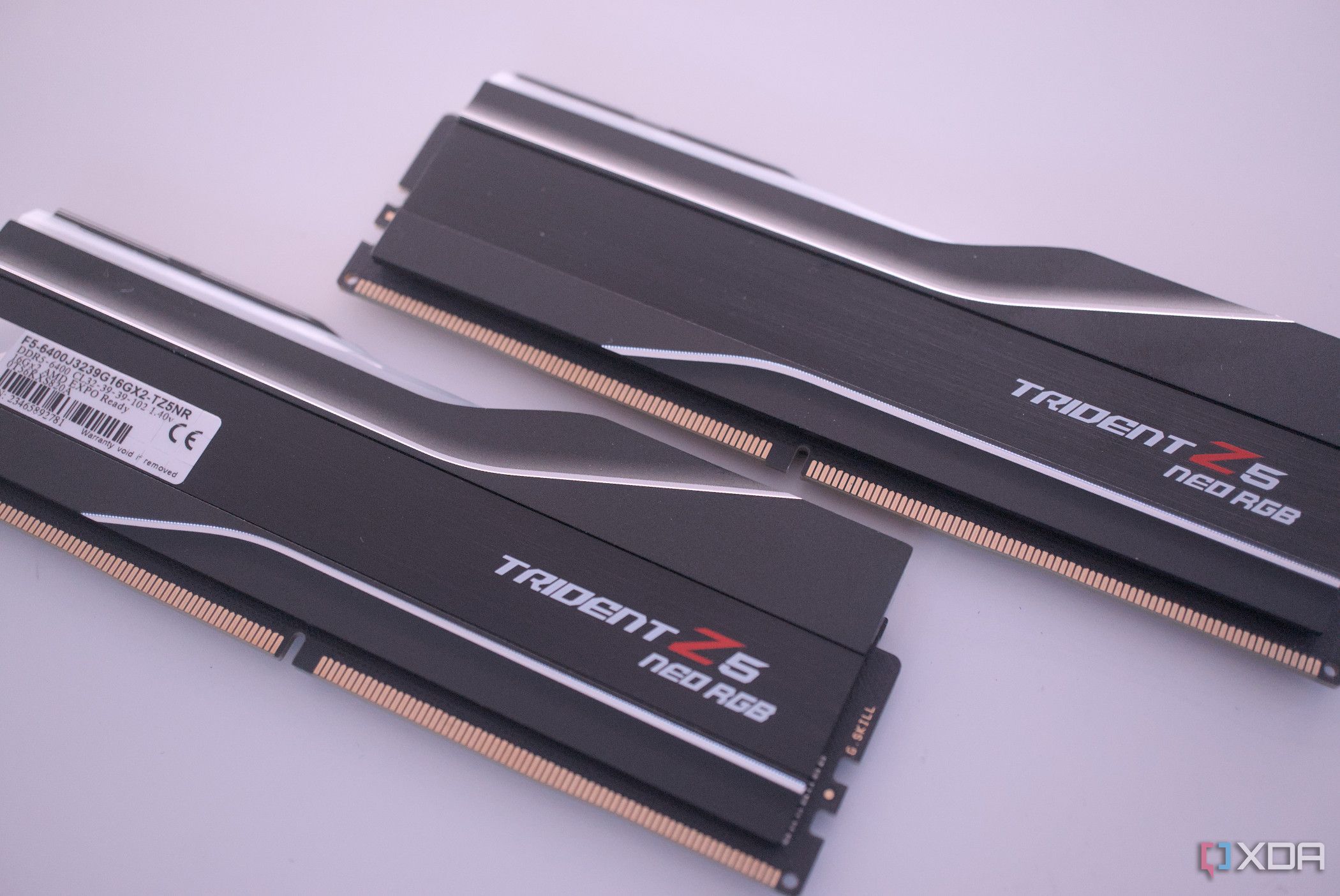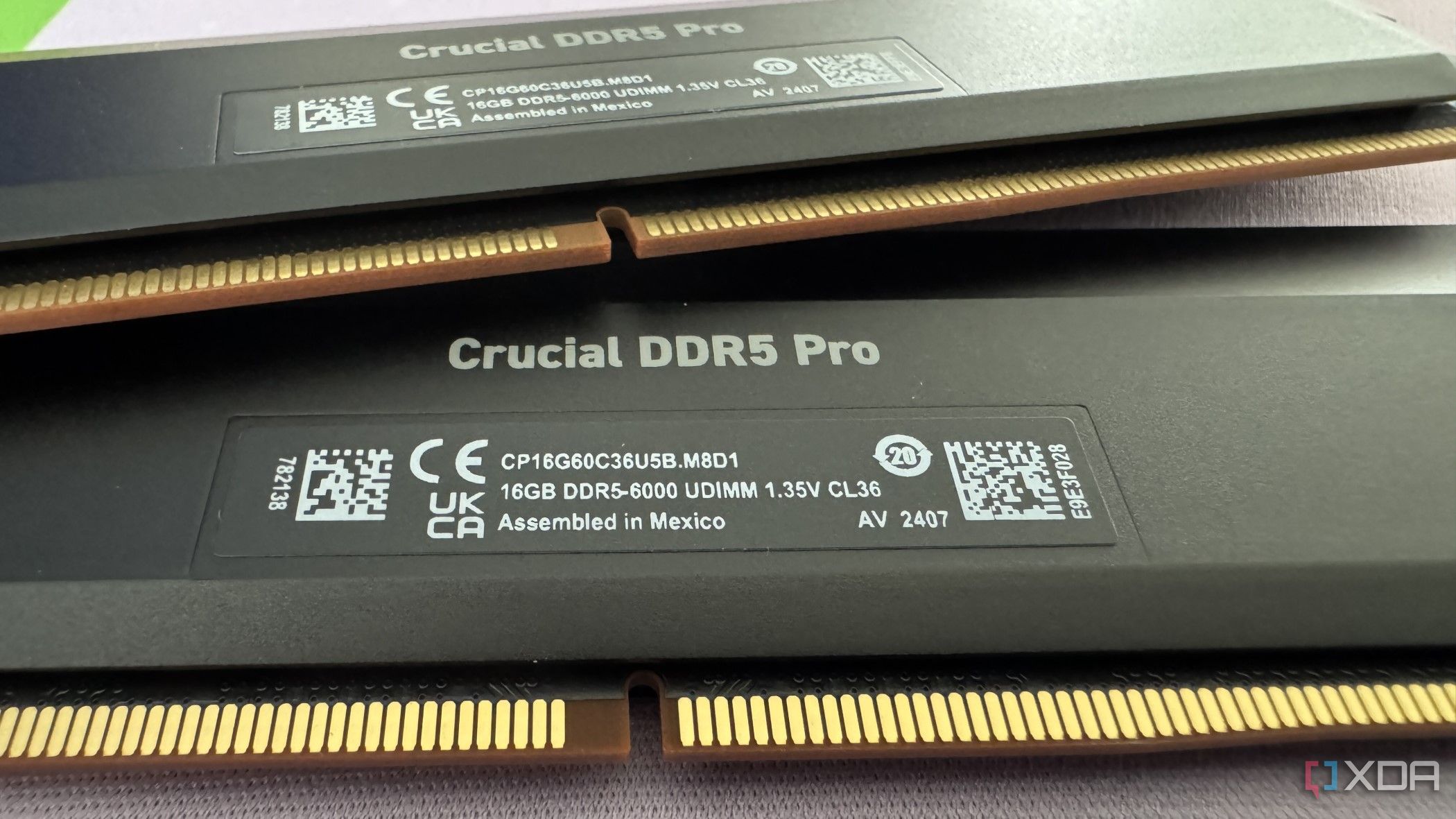Every time I built a new PC, I wasted several hours going through spec sheets before deciding on a RAM kit that I really liked. I used to obsess over every minute detail, trying to convince myself that the extra price would be worth it in the long run. But in reality, they didn't offer meaningful improvements. I encountered CPU bottlenecks before RAM speed and timings ever became a problem. There was really little to no benefit in chasing numbers that looked impressive on paper.
Nowadays, I know that RAM is one of the easiest parts to overspend on while building a high-end PC for gaming or productivity. Sure, high-speed memory still matters, but diminishing returns are very real beyond a certain point. You certainly don't need the fastest RAM kits with the tightest timings because most users probably wouldn't even tell the difference in real-world scenarios. You don't have to buy a kit from a top brand either. So, here are some RAM specs I now ignore after overspending on every one of my previous builds.
Extreme memory speeds
Expect diminishing returns beyond the "sweet spot" for your CPU
Nowadays, you'll find DDR5 RAM kits boasting absurd frequencies, but you don't need to overspend on the fastest kit available. Instead, just focus on what the "sweet spot" RAM speed is for your CPU, and you'll end up saving a lot of money. For instance, if you have an AMD Zen 5 CPU like the 9800X3D or 9950X, DDR5-6000 is the sweet spot. Yes, you can go for slightly higher speeds, especially if you can't find a kit with the timings you like, but most people won't be able to tell the difference while gaming.
On the other hand, if you opted for an Intel CPU like the Core Ultra 9 285K, you'll benefit from faster RAM because its sweet spot is somewhere between 7,000 and 8,000MHz, even though it officially supports DDR5-6400. I'm not saying you shouldn't go beyond the sweet spot, but you should be aware of the trade-offs that come with it. At higher frequencies, your RAM needs more voltage, which increases heat output and puts more strain on the memory controller. If you're unlucky, you may run into stability issues until you lower the frequency. What's the point of spending so much money on high-speed RAM if you're going to have to downclock it anyway?
Overly tight RAM timings
Chasing ultra-low latency kits isn't worth the premium

Every time I went shopping for RAM in the past, I've always tried to get a kit with lower CAS latency without breaking the bank. For DDR4, this made sense because lower timings would noticeably improve performance when paired with the right CPU. However, DDR5 kits run at significantly higher frequencies to compensate for their higher latencies, so ultra-tight timings don't have the same real-world impact. A DDR5-6000 CL26 kit may look better on paper than an equivalent CL30 kit, but the difference while gaming may be 1-2% at best.
For AMD's Zen 5 platform, DDR5-6000 CL30 is the sweet spot. But if you can't find a kit with the timings you want, you can always opt for slightly faster RAM, like DDR5-6400, to offset the higher latency. For me, the biggest issue is price; manufacturers charge a hefty premium for these ultra-low latency kits that barely offer any real benefits for gamers. For instance, Gskill's Trident Z5 Neo DDR5-6000 CL26 kit costs nearly $100 more than the equivalent CL30 kit on sites like Newegg. Unless you’re a highly competitive gamer chasing every possible frame at 1080p, that money is better spent elsewhere.
Low-voltage kits
The efficiency gains are too negligible to matter

In the past, I used to get a little excited when I found a RAM kit rated at a noticeably lower voltage than most others in the same speed range. On paper, it seemed like a win-win because of the lower heat output, power draw, and potentially better overclocking headroom. But in reality, the difference between a 1.35V kit and a 1.40V kit rated for the same speed and timings is negligible in gaming or productivity workloads. You likely won't even notice any meaningful temperature improvements either.
Some people still chase low-voltage kits, assuming they'll achieve a longer hardware lifespan or cooler operation. However, in a desktop PC with adequate airflow, RAM temperature is rarely a performance limiter. Even in SFF cases, the difference of a fraction of a watt is unlikely to make or break your thermal situation. Moreover, kits advertising lower voltage may sometimes cause stability issues when you push for higher speeds or tighter timings. So, you can safely ignore this spec when you're in the market for a new DDR5 RAM kit.
Don't let marketing tempt you to overspend on RAM
It's easy to fall for marketing hype when you're shopping for PC parts, and RAM is one of the easiest traps to fall into. Manufacturers know that advertising higher frequencies and tight timings would tempt customers into buying expensive kits even when they offer little to no benefit in most real-world scenarios. So, before you buy a new RAM kit, make sure you know the sweet spot for your CPU so you don't end up paying more for speeds that won't make a meaningful difference. The extra money you save can go toward a better motherboard, a premium CPU cooler, or even a faster GPU that will actually deliver noticeable performance gains. At the end of the day, your PC's performance is about balance, not maxing out one component for the sake of bragging rights.
.png)











 English (US) ·
English (US) ·